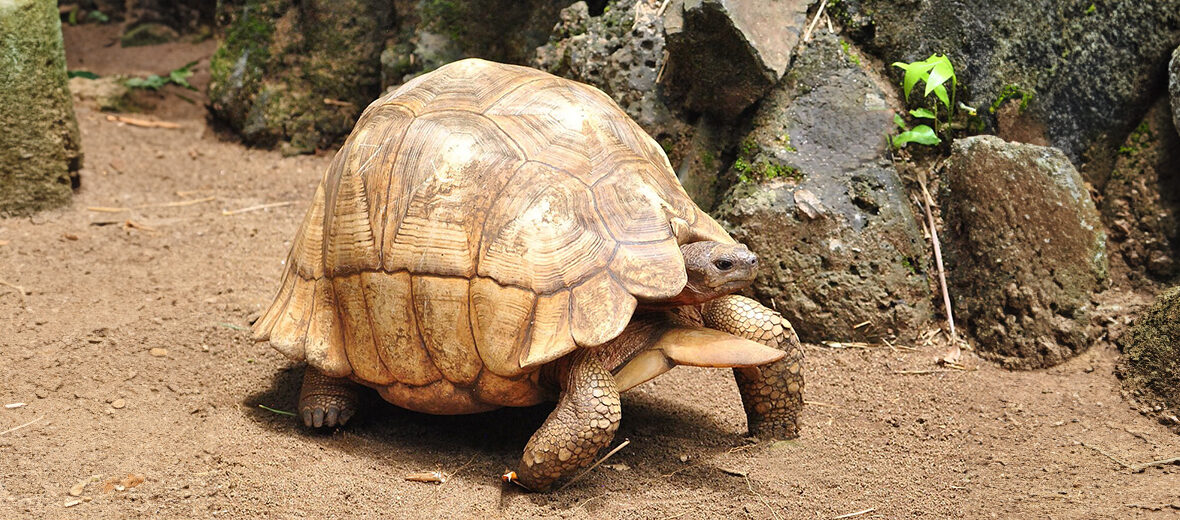
The ploughshare tortoise, aka angonoka tortoise, angonoka, Madagascar tortoise, or Madagascar angulated tortoise is severely threatened by poaching for the illegal pet trade. They also face the threats of habitat loss and destruction at the hands of farming, ranching, fires, and fire suppression; hunting; and trapping. The IUCN lists these tortoises as Critically Endangered. Their populations are also decreasing.
First the Stats…
Scientific name: Astrochelys yniphora
Weight: Up to 23 lbs.
Length: Up to 17 inches
Lifespan: Up to 100+ years
Now on to the Facts!
1.) They prefer the dry forests of the Baly Bay area of northwestern Madagascar.
2.) These tortoises were originally described in 1885 by French zoologist Léon Vaillant.
3.) The name angonoka hails from the Malagasy word used as the local name of this tortoise.
4.) The common name, ploughshare tortoise, is in reference to the appearance of the gular scute of their plastron (shell).
5.) Grasses, shrubs, forbs, and herbs make up the bulk of their diet. Although, they also have been seen eating dead bamboo leaves and even the dried feces (poop) of bushpigs and various carnivores.
But wait, there’s more on the ploughshare tortoise!
6.) The introduced bush pig is the main predator of the angonoka tortoise. They prey on the tortoises’ eggs and their young.
7.) Females produce up to 6 eggs per clutch and up to 4 clutches per year.
Did you know…?
It is estimated that there are fewer than 400 wild individuals remaining.
8.) A captive-breeding facility was set up back in 1986 by the Jersey Wildlife Preservation Trust (now called the Durrell Trust) in cooperation with the Water and Forests Department.
9.) In 1996, up to 75 tortoises were stolen, which later turned up for sale in the Netherlands.
10.) In 2004, 224 captive-bred juveniles out of 17 adults were bred to be introduced back into the wild.
Now a Short Ploughshare Tortoise Video!
Be sure to share & comment below! Also, check out the Critter Science YouTube channel. Videos added regularly!
Want to suggest a critter for me to write about? Let me know here.
Some source material acquired from: Wikipedia & IUCN
Photo credit: Anai171



